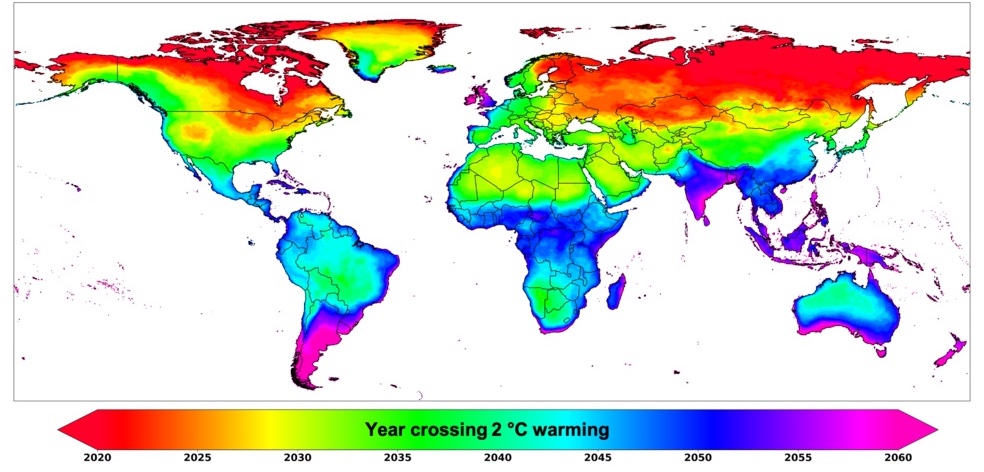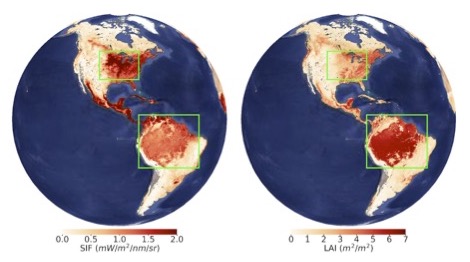For decades, scientists have used satellite data to assess the health and greenness of Earth’s…
Bay Area Environmental Research Institute awarded $117 million from NASA Ames to build on existing partnership
November 3, 2023
Moffett Field, CA—The Bay Area Environmental Research Institute (BAERI), in partnership with California State University, Monterey Bay (CSUMB) and San José State University (SJSU), has been awarded a five-year, $117 million cooperative agreement from NASA Ames Research Center to advance cutting-edge research in Earth science and technology.
The award, the Ames Research Center Cooperative for Research in Earth Science and Technology (ARC-CREST), is a renewal of the original 10-year agreement awarded to BAERI and CSUMB in 2012 and is a testament to the successful partnership between the organizations. To date, ARC-CREST scientists have received 3 individual and 21 group achievement awards from NASA, supported over 30 scientific field campaigns, published 387 articles in peer-reviewed journals, created 10 critical new datasets and technologies, and trained over 500 students to help advance Earth science and natural resources management.
“ARC-CREST provides crucial support for Earth science and makes it possible for BAERI to facilitate long-lasting collaborations between NASA and outside teams,” said Robert Bergstrom, president of BAERI. “This partnership is a driving force behind the tangible progress we’re making in Earth science research.”
The increased annual funding of the new award, almost double that of the original ARC-CREST, paves the way for more researchers to engage in extensive collaborative efforts. “The ARC-CREST agreement creates vibrancy, enabling cooperation in a way that the civil servant workplace cannot always provide,” said Ames Earth Science Division Chief Florian Schwandner. “It brings a different spirit into the collaboration: providing new ideas, and training the next generation.”
Over the next five years, research groups will build on the success of several ongoing and completed projects and initiatives. These include:
- OpenET (CSUMB/NASA), a tool that provides easily accessible satellite-based evapotranspiration data for improved water management.
- Wildfire research (SJSU), leveraging faculty and expertise of the Wildfire Interdisciplinary Research Center, including the creation and deployment of innovative remote sensing technology, such as the SJSU Wildfire Infrared Imaging System. This work aims to enhance understanding of extreme fire behavior and to improve fire modeling.
- Climate research (BAERI/CSUMB/NASA) that uses NASA Earth Exchange data to observe and manage the impacts of climate extremes (wildfires, floods, droughts, hailstorms, etc.) on various socioeconomic systems.

About NASA Ames
Founded as an aeronautical laboratory in 1939 and converted to a NASA research center in 1958, Ames Research Center has since led NASA in conducting world-class research and development in aeronautics, exploration technology, and science. Ames has evolved as a place where state-of-the-art facilities and world-class talent meld to produce cutting-edge research in fields such as aerodynamics, thermodynamics, simulation, space and life sciences, and intelligent systems. In recent decades, Ames has increasingly partnered with public and private organizations, nonprofits, and academia, to continue to advance human understanding of our planet and beyond. To learn more, visit www.nasa.gov/ames/about-ames/.
About the Bay Area Environmental Research Institute
The Bay Area Environmental Research Institute is a scientist-founded research nonprofit that enables groundbreaking work in the Earth and space sciences. Founded in 1993 and headquartered at the NASA Ames Research Park in Moffett Field, California, the Institute has supported over 350 researchers in the last 30 years and has partnered with dozens of organizations, including NASA, Stanford University, USGS, Protectores de Cuencas, and The University of Sydney. To learn more, visit https://baeri.org/.
About California State University, Monterey Bay
Established in 1994 by educators and community leaders on the former site of Fort Ord, California State University, Monterey Bay, explores innovative ways to meet the needs of students while powering the regional economy. We make higher education accessible to traditionally underserved and low-income populations. Seventy-two percent of our students receive some form of financial aid, and fifty percent of our students are among the first generation of their family to go to college. The university’s diverse population of over seven thousand students receive personal attention in small classes while pursuing degrees in twenty-five undergraduate and nine graduate majors. Learn more at csumb.edu.
About the Wildfire Interdisciplinary Research Center at San José State University
The Wildfire Interdisciplinary Research Center at San José State University brings together an interdisciplinary team of academic and industry leaders to address the wildfire problem faced by many regions around the nation and the world. A National Science Foundation Industry-University Cooperative Research Center (IUCRC) and an official Campus Center and Institute within the California State University system, WIRC’s mission is to conduct high-impact wildfire research to provide new predictive tools and informed strategies to communities and industry stakeholders, including first responders, those interested in risk analysis, and policymakers in communities, companies, and utilities affected by wildfire. Learn more at https://www.wildfirecenter.org/.


